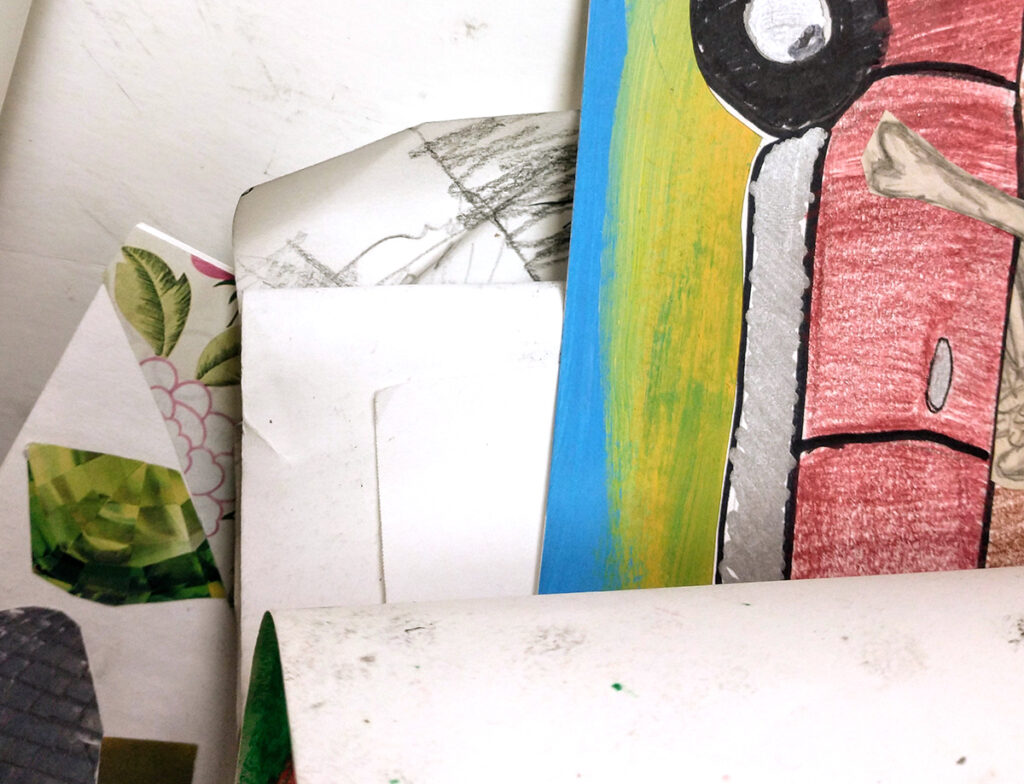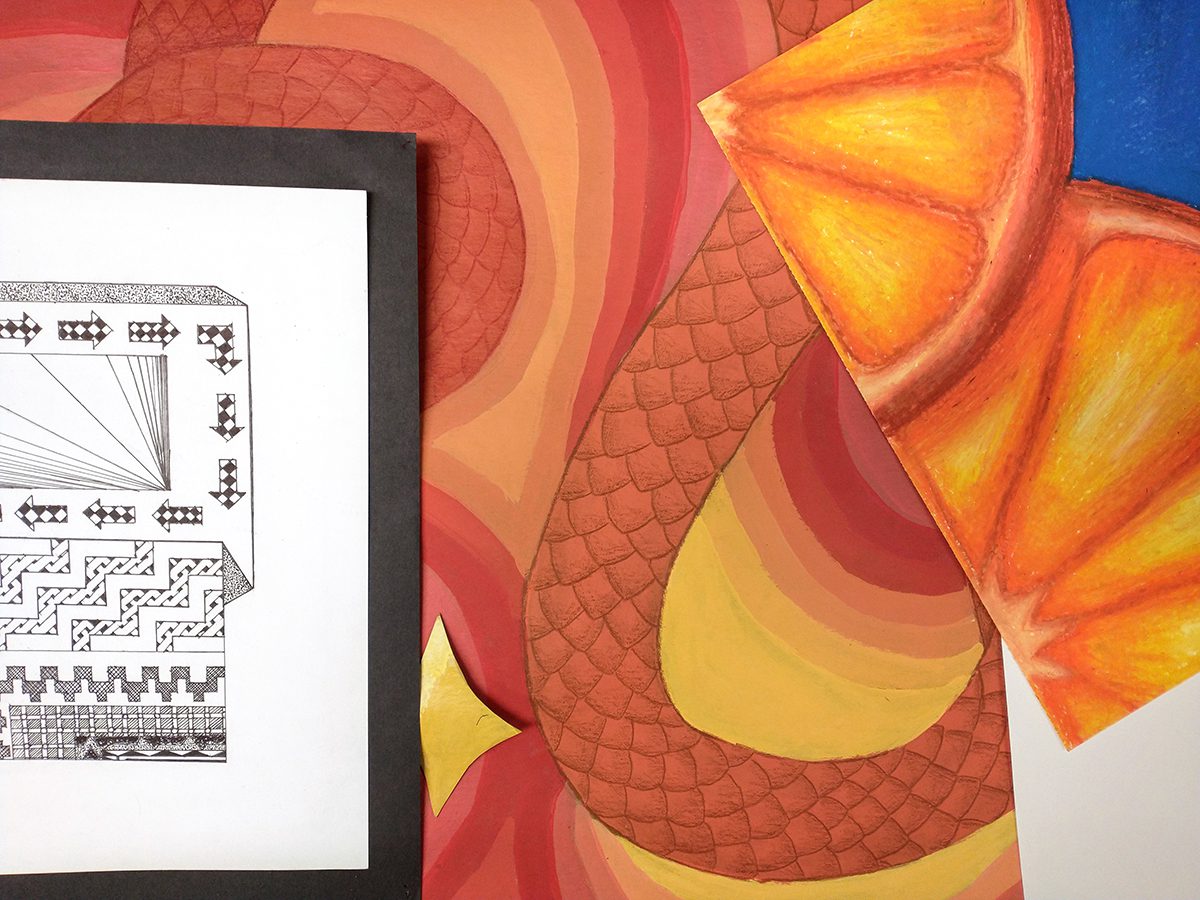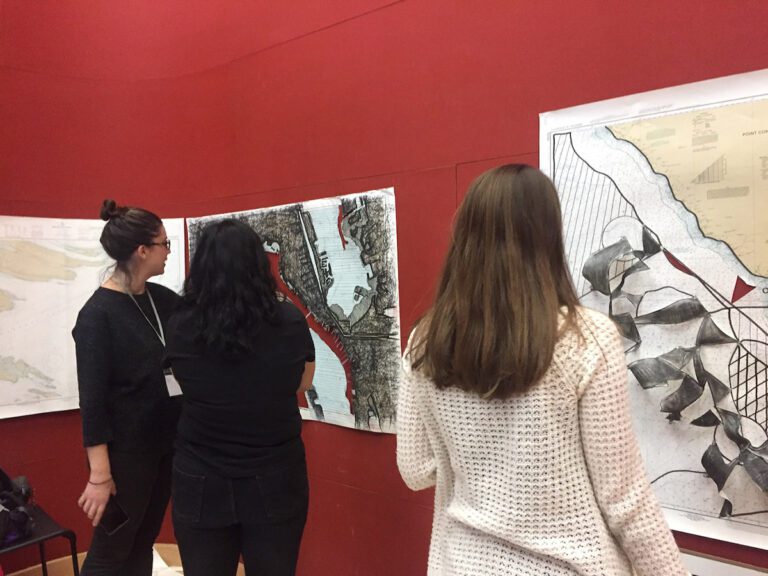By this point in the year, students have probably made quite a few pieces of artwork ranging from sketchbook exercises to fully realized pieces. You may already require your students to keep track of their artwork or store it in portfolios.
If you are looking for a summative assessment that doesn’t feel like busywork, an end-of-semester digital portfolio is the way to go. Online portfolios are an effective way to document student growth throughout the semester. Students will also build real-world skills such as decision-making, communication, reflection, technical competency, and self-awareness. With a little bit of guidance, your students will end the semester with more insight into their own creative growth.
Let’s talk about why your students should have digital portfolios and explore how to make them!
Why should your students build digital portfolios?
Creating digital portfolios is a great summative assessment for your semester. Portfolios show how students build their creative thinking skills over a set amount of time. According to Scholastic, they are a valuable assessment tool for all ages. Building portfolios teaches students real-world skills, like the ones listed above, as well as internet safety. They encourage students to reflect on the work that they completed throughout the year. Portfolios are a way to tie together every project and art challenge given thus far. It shows students the connections between each project.
Digital portfolios allow you to reflect, too! Teachers can see the growth of their individual artists as well as the whole class. Teachers of year-long courses can identify holes in their curriculum that they need to focus on in the upcoming semester. For older students, having a professional digital portfolio is impressive on job, college, and scholarship applications. Plus, many college programs are looking for portfolios showing evidence of growth.
Now that we have established why it’s important to have digital portfolios, let’s discuss how students will create them.

How do you guide your students through building their portfolios?
Step 1: Determine a platform.
Set the standard by choosing a platform for students to build their portfolios. Be sure it’s a platform you are comfortable with so you can help students troubleshoot technical issues. For younger students, a platform like Google Slides or Photos may be the easiest. They will also be the most protective of your students’ privacy. For older students, options like Google Sites or Weebly are free but can be published. Some learning management systems (LMS) have portfolios built right into them. If your district uses an LMS already equipped with portfolios (like Schoology or Seesaw), that may be the best way to go.
Step 2: Share your portfolio rubric.
Build your rubric like a checklist to make it easy for students to follow. This allows them to be creative in their presentation while still having guidance. Although designed for artwork, you can easily customize the Plug n’ Play rubric to evaluate a portfolio by filling in the blank fields with your specifications.
Provide students with an outline of what belongs in their portfolios and where. Be sure to follow your district’s guidelines regarding personal information and work students share online.
Here are some requirements you may consider having students incorporate:
- Compose a short About Me page.
- Display all artwork together as a body of work.
- Designate separate pages for individual artworks.
- Caption each artwork with the title, medium, and size.
- Ensure it is visually appealing and of professional quality.
- For advanced students, create a separate page to discuss their sustained investigation (for AP) or exhibition text (for IB).
Step 3: Include student and caregiver feedback.
Before portfolios are due, facilitate a couple of different critiques. For the highest quality feedback, make sure students hear from both adults and their peers. If your students are one-to-one with devices, host an in-class website critique. Students will show their elbow partner their portfolio and ask for comments directly related to the rubric. Remind students to give feedback on the portfolio layout, the information it provides, and to note any missing elements. Although students should be familiar with the requirements, it is a good idea to review them.
Involve your students’ caregivers in the artmaking process, too. Send a form home with each student before they complete their portfolio. Caregivers should fill out this form to prompt conversation about their student’s artwork and portfolio outside the art room. The goal is to bring about conversations regarding their student’s artwork and portfolio at home. If your student does not have a caregiver, allow them to choose another trusted adult, such as a teacher or counselor, to help them with this assignment.
If you are feeling stuck on how to compose a feedback form for caregivers, here is one already made for you! And for more ways to connect with caregivers this year, check out this article about logging communication in the art room.
Step 4: Document student growth through a final project.
Building portfolios gives students time to reflect on their semester of work as a whole. Students choose one piece from their portfolio they believe they can improve. Model how to make specific goals for improving their piece. Then allow them to work independently to create a new and improved version of their selected artwork. Students can even create a page in their digital portfolio documenting their revision process. While independent revision is a skill actively sought by colleges, younger artists can practice this skill, too. You may need to provide extra scaffolding, limit supplies and choice, and provide more frequent check-ins for younger artists.

Using digital portfolios as an end-of-semester summative assessment has benefits for both you and your students. Reflecting on an entire semester’s worth of work and creativity can help document growth. Portfolios effectively communicate elements of professionalism while helping students curate a collection of their work.
For further reading, check out these articles about the benefits of digital portfolios and how to use Adobe Spark to build digital portfolios. If you are looking for even more information, there is a PRO Pack about student portfolio basics. With all the benefits of digital portfolios, it’s time for you to start integrating them into your art classes!
How do students revisit and revise projects they have already completed in your art room?
What reflection opportunities do you offer your students?
Magazine articles and podcasts are opinions of professional education contributors and do not necessarily represent the position of the Art of Education University (AOEU) or its academic offerings. Contributors use terms in the way they are most often talked about in the scope of their educational experiences.






